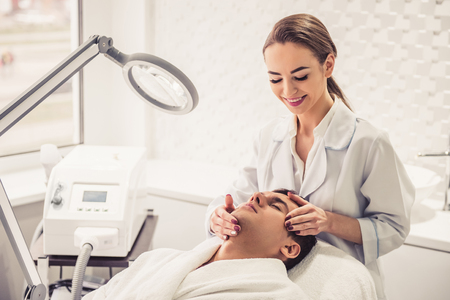1. Understanding Sun Damage within the UK Context
In Britain, conversations about sun damage often differ significantly from those in sunnier climates, yet the issue remains ever relevant. While many might associate sunburn and UV-related skin concerns with Mediterranean holidays, the reality is that sun damage is a growing concern here at home. The UK’s moderate climate and frequent cloud cover can create a false sense of security, leading many to underestimate their daily exposure to ultraviolet (UV) radiation. Notably, up to 80% of UV rays can penetrate clouds, making even overcast days a potential risk for cumulative skin damage. Recent studies show an increase in cases of skin cancer and premature ageing linked to sun exposure among Britons, highlighting the need for greater awareness. Moreover, the British public’s attitudes towards sun protection are shaped by cultural factors—such as a desire to make the most of rare sunny days and the persistent belief that tanned skin signals health. Regional variations in UV intensity, alongside differences in outdoor lifestyle habits across England, Scotland, Wales, and Northern Ireland, further influence individual risk profiles. Understanding these uniquely British environmental and social factors is key to developing truly holistic approaches to sun protection and skin health.
2. Dietary Strategies for Skin Health
When considering holistic approaches to managing sun damage, nutrition takes centre stage in the British context. A balanced diet, rich in skin-supporting nutrients, can bolster the body’s natural defences and aid in recovery from UV exposure. Modern British dietary habits have increasingly incorporated foods and supplements renowned for their positive impact on skin resilience.
Key Foods for Skin Resilience
The UK’s emphasis on seasonal and locally sourced produce aligns well with skin health goals. British diets often feature:
| Food | Nutrient | Skin Benefit |
|---|---|---|
| Oily Fish (e.g. mackerel, salmon) | Omega-3 fatty acids | Reduces inflammation, supports skin barrier function |
| Berries (e.g. blackcurrants, strawberries) | Vitamin C, antioxidants | Promotes collagen production, repairs sun damage |
| Kale & Spinach | Carotenoids, Vitamin E | Protects against UV-induced oxidative stress |
| Tomatoes | Lycopene | Improves skins natural SPF, reduces redness from sun exposure |
| Nuts & Seeds (e.g. flaxseed, walnuts) | Zinc, Vitamin E | Aids healing and moisture retention post-sun exposure |
Supplements Popular in the UK
While whole foods remain the cornerstone of a nutritious diet, certain supplements are widely adopted by Britons to enhance skin health:
- Vitamin D: Given the UK’s limited sunlight for much of the year, supplementation is common to support overall health and skin repair.
- Collagen Peptides: Increasingly popular in wellness circles for supporting elasticity and reducing visible sun damage.
- Zinc: Often recommended for its role in cellular repair and inflammation reduction after UV exposure.
- Antioxidant Complexes: Formulations containing Vitamins C & E are favoured to neutralise free radicals generated by sun exposure.
The Modern British Plate: Patterns That Protect
The classic ‘Eatwell Guide’ promoted by the NHS encourages variety and moderation—principles that inherently benefit skin health. Typical meals may include grilled fish with seasonal vegetables or berry-rich porridge for breakfast. The Mediterranean-style eating pattern has also gained traction, with its focus on plant-based foods, healthy fats, and minimal processed ingredients—all supportive of healthy skin.
Cultural Shifts Towards Proactive Nutrition
A growing number of Britons are adopting proactive dietary strategies by integrating smoothies with spinach and berries or adding omega-3 rich seeds to their morning oats. This evolving food culture reflects a shift towards prevention—aiming not just to treat but to fortify the body against sun-induced skin ageing from within.

3. Everyday Lifestyle Adjustments
Living in the UK presents its own unique set of challenges and opportunities when it comes to protecting oneself from sun damage. While many may associate Britain with grey skies and rainy days, the reality is that UV exposure can still pose risks throughout the year. Adopting practical, everyday lifestyle modifications is essential for maintaining healthy skin in the British climate.
Clothing Choices: The First Line of Defence
One of the most effective ways to shield skin from the sun is through thoughtful clothing choices. In the UK, layering is a common practice due to unpredictable weather, and this can work in your favour. Opt for lightweight, long-sleeved tops and trousers made from tightly woven fabrics during sunnier days, especially in spring and summer. Many British retailers now offer stylish options with built-in UV protection, making it easier to stay safe without compromising on fashion. Don’t forget the classic British accessory—a wide-brimmed hat or a cap—which provides additional protection for the face and neck.
Outdoor Habits: Timing and Shade
Britons love making the most of sunny spells, often flocking to parks, gardens, and seaside locations. However, its wise to be mindful of peak UV hours, typically between 11am and 3pm, even when it doesn’t feel hot. Planning outdoor activities for earlier in the morning or later in the afternoon can significantly reduce sun exposure. When outside, seek out shaded areas under trees or use umbrellas—especially during family picnics or garden parties.
Recognising Seasonal Variations
The strength of the sun in the UK varies considerably throughout the year. Many people underestimate UV exposure during late spring and early autumn, or even on overcast days. It’s important to check the daily UV index, which is readily available through British weather services, and adapt your routine accordingly. Remember that snow and water can reflect UV rays, increasing exposure during winter walks or coastal holidays. Adapting your protective measures to seasonal changes is a hallmark of a holistic approach that aligns with the rhythms of British life.
Summary
Incorporating these everyday adjustments—smart clothing choices, mindful outdoor habits, and an awareness of seasonal variations—can make a significant difference in reducing sun damage risk. By integrating these practices into daily routines, Britons can enjoy the outdoors safely and sustainably all year round.
4. Modern British Dermatological Treatments
When addressing sun damage holistically, understanding the range of dermatological treatments available across the UK is crucial. British approaches combine both advanced medical therapies and accessible options, reflecting regional differences and NHS support structures. Here’s an overview of what’s on offer in modern Britain.
NHS-Supported Options
The NHS provides several accessible treatments for sun damage, particularly where there are medical concerns such as actinic keratoses or early skin cancers. Common NHS interventions include:
| Treatment | Description | Availability |
|---|---|---|
| Cryotherapy | Liquid nitrogen freezes damaged cells | Widely available via referral |
| Topical Creams (e.g., 5-FU, Imiquimod) | Prescription creams target pre-cancerous cells | Primary care and specialist clinics |
| Photodynamic Therapy (PDT) | Light-based treatment for certain lesions | Larger NHS dermatology centres |
Private Clinic Innovations
Bespoke solutions in private clinics have become increasingly popular, particularly in urban centres like London, Manchester, and Edinburgh. Many Britons choose private care for shorter waiting times and a broader range of cosmetic-focused therapies. The following table outlines popular private treatments:
| Treatment | Benefits | Typical Settings |
|---|---|---|
| Chemical Peels | Smooths pigmentation and texture | High-street clinics, boutique practices |
| Laser Resurfacing (Fraxel, IPL) | Targets deep sun spots and fine lines | Metropolitan aesthetic clinics |
| Microneedling with Serums | Boosts collagen, improves tone | CQC-registered facilities nationwide |
| LED Phototherapy | Reduces inflammation, supports healing post-treatment | Spa-style and clinical settings alike |
Diversity Across Metropolitan and Rural Areas
The landscape of dermatological care varies between bustling cities and rural regions. Metropolitan areas tend to offer a broader spectrum of cutting-edge treatments due to higher demand and greater clinic density. In contrast, rural residents may rely more heavily on NHS services or travel for specialised care. Teledermatology—remote consultations via digital platforms—is bridging this gap, allowing broader access to expert advice even in less populated counties.
Trends Shaping British Sun Damage Care
A significant trend is the blending of medical necessity with cosmetic desire: many seek interventions that not only address health concerns but also restore confidence in their appearance. Preventative education campaigns by the NHS and charities such as Cancer Research UK continue to raise awareness about early intervention and regular skin checks—a uniquely British approach that combines pragmatism with public health values.
5. Traditional and Emerging British Remedies
When it comes to caring for sun-damaged skin, the UK is seeing a renewed appreciation for heritage skincare practices. Many British households have long relied on simple, time-honoured remedies—think of soothing oatmeal baths, cold compresses using chamomile tea bags, or the gentle application of cucumber slices, often grown in local gardens. These natural approaches are valued not only for their effectiveness but also for their deep cultural roots, connecting modern routines with generations past.
Locally-Sourced Natural Ingredients
The British countryside offers a bounty of ingredients historically used for skin health. Lavender from Norfolk fields, honey harvested by local beekeepers, and rosehip oil pressed from hedgerow berries are all gaining traction as nurturing treatments. These ingredients are prized for their antioxidant and anti-inflammatory properties, which can support the skin’s recovery from sun exposure. Increasing numbers of artisanal skincare brands across the UK are championing these local botanicals, offering products that blend tradition with contemporary sensibilities.
Integration of Evidence-Based Approaches
Alongside these heritage methods, there is a growing movement towards integrating new evidence-based holistic remedies into daily skincare. For example, formulations containing vitamin C derived from British-grown blackcurrants or sea buckthorn are now being included in serums aimed at repairing UV damage. Clinical studies supporting the benefits of these actives have encouraged both high-street chemists and boutique apothecaries to adopt them in their offerings.
A Balanced Approach for Modern Britain
This blend of traditional wisdom and scientific innovation reflects a distinctly British approach—practical yet open to progress. Many people now favour routines that combine trusted home remedies with the latest dermatological research. Whether it’s layering a locally-made calendula balm under a laboratory-developed SPF or sipping herbal teas to support skin from within, Britons are embracing holistic sun care that honours the past while looking to the future.
6. Public Awareness & Community Resources
Public health awareness and community support play a pivotal role in addressing sun damage across the UK. National campaigns, such as Cancer Research UKs “SunSmart” initiative, have become household names, providing practical advice on sun safety tailored to the British climate and skin types common in the region. These campaigns emphasise early detection of skin changes, the importance of regular self-examination, and using broad-spectrum sunscreens even on cloudy days—a message that resonates given the UKs often unpredictable weather.
Charities like the British Skin Foundation and Melanoma UK offer robust resources for education and support. They not only fund research but also facilitate access to informational materials for schools, workplaces, and community groups. These organisations frequently collaborate with NHS services to ensure their guidance aligns with the latest medical standards while remaining accessible for all age groups.
Local initiatives further reinforce these messages through grassroots action. Many councils organise summer events at parks or beaches where residents can receive free sunscreen samples, skin checks, and demonstrations on protective clothing. Schools are increasingly integrating sun safety into their health curriculum, fostering good habits from a young age. Pharmacies and GP surgeries often display posters or distribute leaflets about UV risks and prevention tips, especially ahead of holidays or during unexpected heatwaves.
Community-driven efforts are particularly important in reaching vulnerable populations—such as outdoor workers or older adults—who may have less awareness of modern guidelines or find it harder to access dermatological care. Support groups and online forums hosted by charities provide safe spaces to share experiences, ask questions about suspicious moles or treatment side effects, and encourage proactive health management.
Together, these public awareness strategies form an essential part of holistic sun damage prevention in the UK. By combining nationwide campaigns with local engagement and targeted resources, British society is increasingly well-equipped to recognise the risks of sun exposure and adopt evidence-based habits for long-term skin health.


